Eco Descaler – Coffee Machine Descaling Powder
$16.95 USD
You need to descale your coffee machine at least every 3 months to prolong the life of your machine, and keep the coffee tasting good!
Introducing our Green Pods Eco Descaler: Our environmentally friendly and easy-to-use coffee machine descaling powder.
- Usable for all Coffee machines
- Extend the life of your coffee machine
- Improve the taste of your coffee
- Contains 4 sachets, enough for 1 year of use.
- Perfectly dosed, just pour in one sachet.
- Environmentally friendly and food safe.
In stock
✔️ RESTORE AND PROTECT YOUR COFFEE MACHINE
Contains an optimized blend of organic acids that yields outstanding scale removal with zero flaking
✔️ SAFE FOR YOU AND YOUR MACHINE
Our Eco Descaler is safe for all machine parts. It leaves no harmful residues and does not cause corrosion within the coffee machine. Tested on Aluminium, copper, brass and stainless steel.
✔️ CAN BE USED ON A WIDE RANGE OF EQUIPMENT
Designed for espresso machine water reservoirs, boilers and coffee brewers, Restore can also be used in kettles
✔️ ECO FRIENDLY AND BIO-EGRADABLE
All ingredients are all rapidly bio-degradable meeting international standards.
What is Descaling?
Water is the most dominant ingredient in a cup of coffee. But water isn’t just water. It contains minerals, such as magnesium and calcium. When you make coffee, these minerals get into the machine and form mineral buildup in and around the heating element of the coffee maker. These deposits are known as limescale (or ‘scale’ for short).
The process of eliminating the mineral deposits from the heating element is known as descaling!
How Often Do You Need to Descale Your Machine?
The heating element of a coffee maker is not visible. So, mineral buildup often goes unnoticed for several months. You need to descale a coffee maker every 3 to 6 months to keep it in excellent working condition. The exact frequency can be decided based on the mineral content of the water you have been using and how many coffees you make
Most coffee machine manuals recommend that you descale your machine every three months or 300 coffees – whichever comes first.
That means if you use your machine often you may need to descale more frequently. Some examples of descaling frequencies are shown in the table below.
| Number of coffees per day | Recommended descaling frequency |
| 1-2 | Every 3 months |
| 3-4 | Every 3 months |
| 5-8 | Every 2 months |
| 8-10 | Every month |
The frequency of descaling also largely depends on what is known as your ‘water hardness’ – which essentially means how much mineral salts are present in your town or city’s water supply. Areas with high water hardness will require you to descale your machine more often, and areas with low water hardness can reduce the amount of maintenance required.
How long will it take?
The entire process to use our Eco Descaler to descale your Coffee Machine should take between 20 and 30 minutes.
A Guide To Descaling Your Coffee Machine
The problem is each machine is different, so you’ll need to know the exact combination of buttons to press and the process to follow to make your machine enter descaling mode and run each rinse cycle. Fortunately, we’ve written detailed guides for the most popular models of coffee machines. You can check them out here (or go to thegreenpods.co.nz/descaling)
- Nespresso descaling guides
- Keurig descaling guides
- Dolce Gusto descaling guides
- Breville descaling guides
- Moccamaster guides
Frequently Asked Questions And Issues?
Here are some of the issues you may experience while performing the descaling task:
- Why is foam comming out of my machine?
- Can you use vinegar instead of descaling soltion
- What is descaling solution made from?
- Can you make your own descaling soltuion?
- What happens if i dont descale my coffee machine?
- Is decaling soltion toxic
- Can you descale with baking soda?
Q1. Why is there foam coming out from the coffee machine?
When you perform this task, you may find foam coming out from the brewer due to the cleaning action of the descaling solution. Don’t panic. It is the aftereffect of the reaction between the descaling solution and mineral deposit.
It just means your machine is well overdue a clean!
Q2. Can you use vinegar instead of descaling solution?
Scientifically speaking, cleaning your Keurig machine with vinegar is almost exactly the same as with a commercial descaler solution.
Unfortunately, however, vinegar tends to peel off the scale build up in flakes which could clog your machine causing irreparable damage. We’ve heard numerous cases of people having to throw out their coffee machine because of this. We’d recommend sticking with a commercial descaling product.
Q3. What is a descaling solution made of?
Descaling solution is generally an acidic chemical that is capable of dissolving mineral salts such as oxides and carbonates. Notable descaling agents include acetic acid, citric acid, and lactic acid. These are all food-safe chemicals, however citric and acetic acid do impart a more noticeable taste to the machine, thus lactic acid is typically preferred.
Q4. Can you make your own descaling solution?
You can make your own descaling solution using vinegar or citric acid, though we’d recommend using a commercial descaling product in a concentration that is proven not to damage your machine
Q5. What happens if you don’t descale your coffee machine?
Scale builds up inside the pipes restricting the flow of water. If this happens inside the heating element it prevents water from reaching its optimal brewing temperature. When this happens it’s impossible to extract the full flavor from the coffee pods and the flavor will become weak. Severe scale buildup can clog water flow completely, causing a machine to stop working.
Q6. Is descaling solution toxic?
Our Green Pods Eco Descaler is completely non-tox and eco-friendly. It’s made from citric acid which is food safe in moderate doses. Other descaling solutions may use caustic chemicals such as sodium hydroxide which is highly toxic, so please check the label if unsure.
Q7. Can you descale with baking soda?
We don’t recommend using baking soda to descale your coffee machine.
| Weight | 0.12 kg |
|---|---|
| Dimensions | 6 × 10 × 3 cm |
Add a review Cancel reply
You may also like…
Coffee Pods
Coffee Pods
Coffee Pods

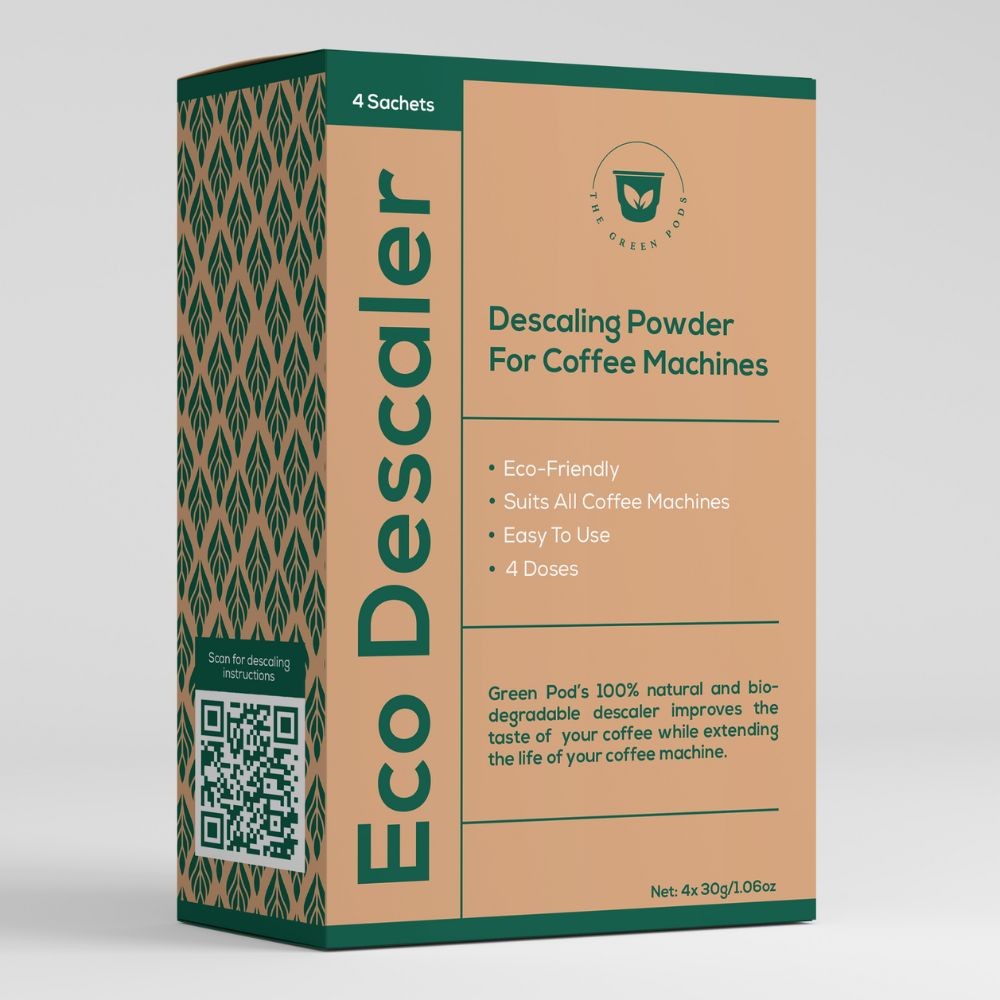
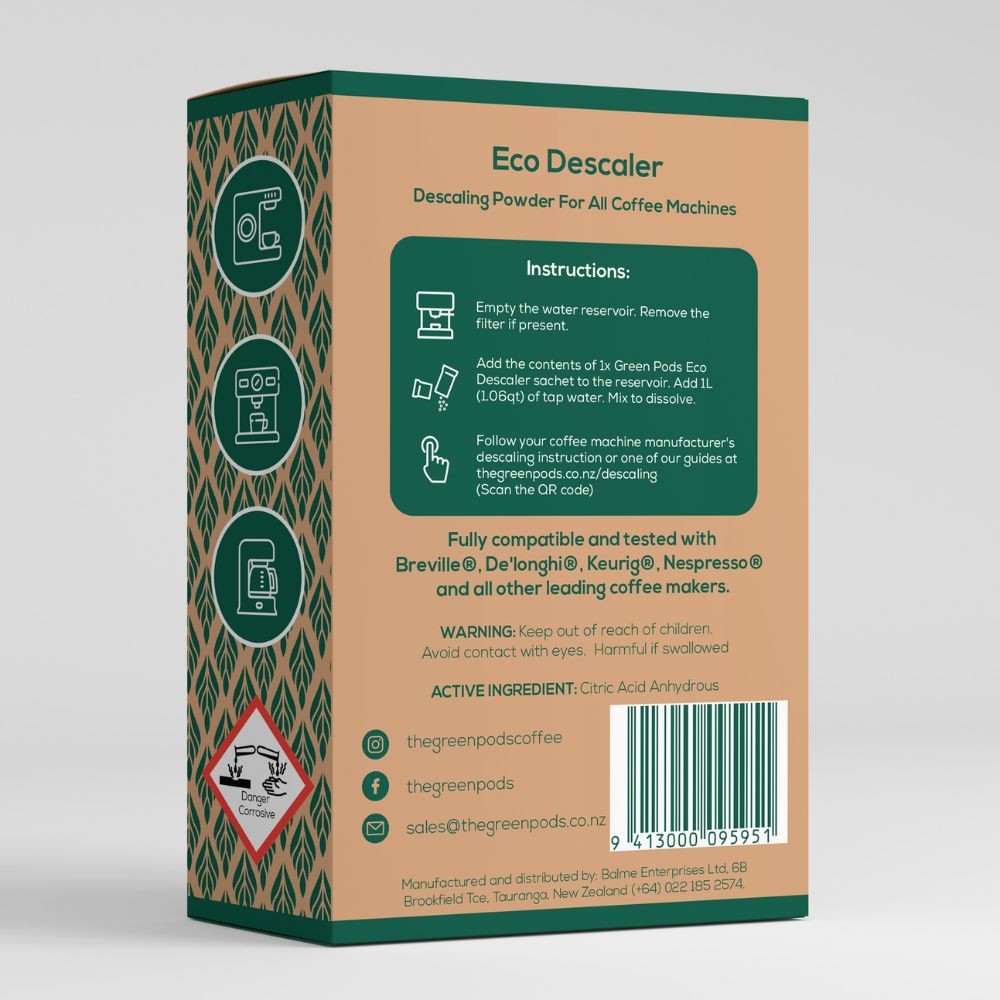
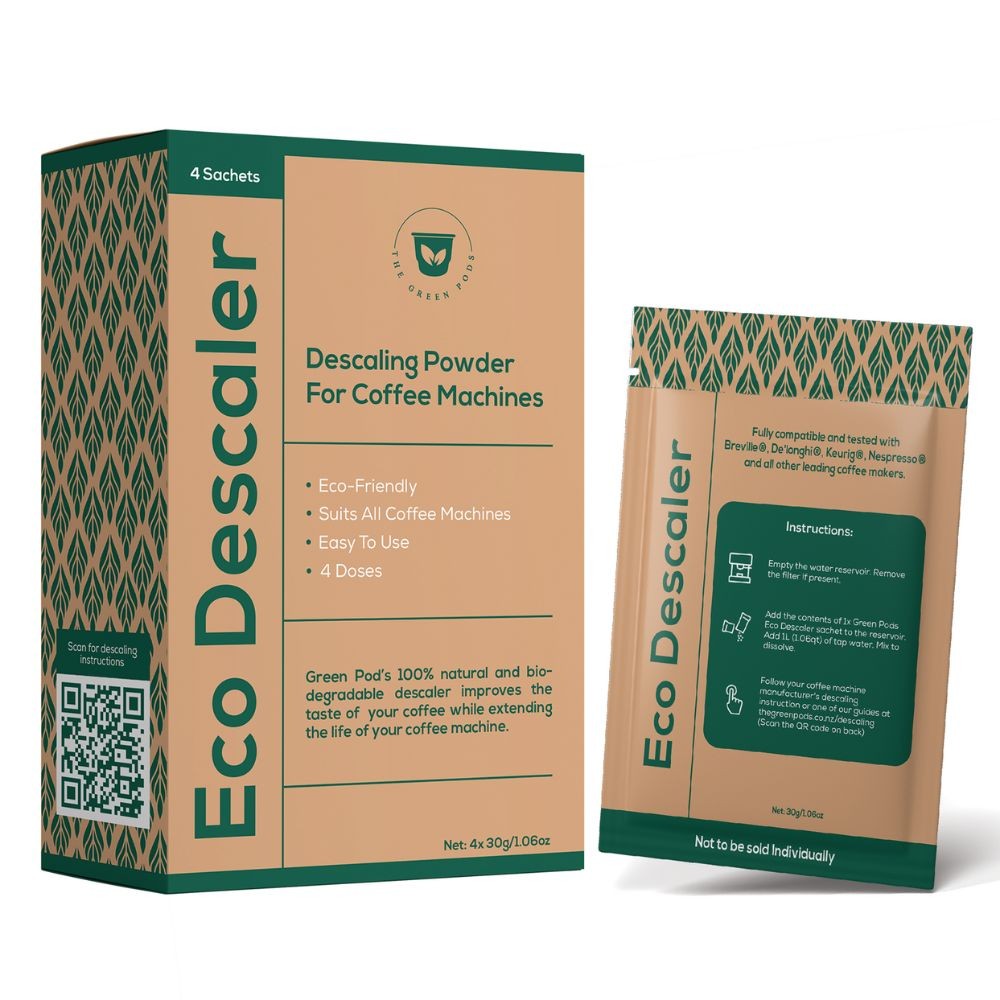
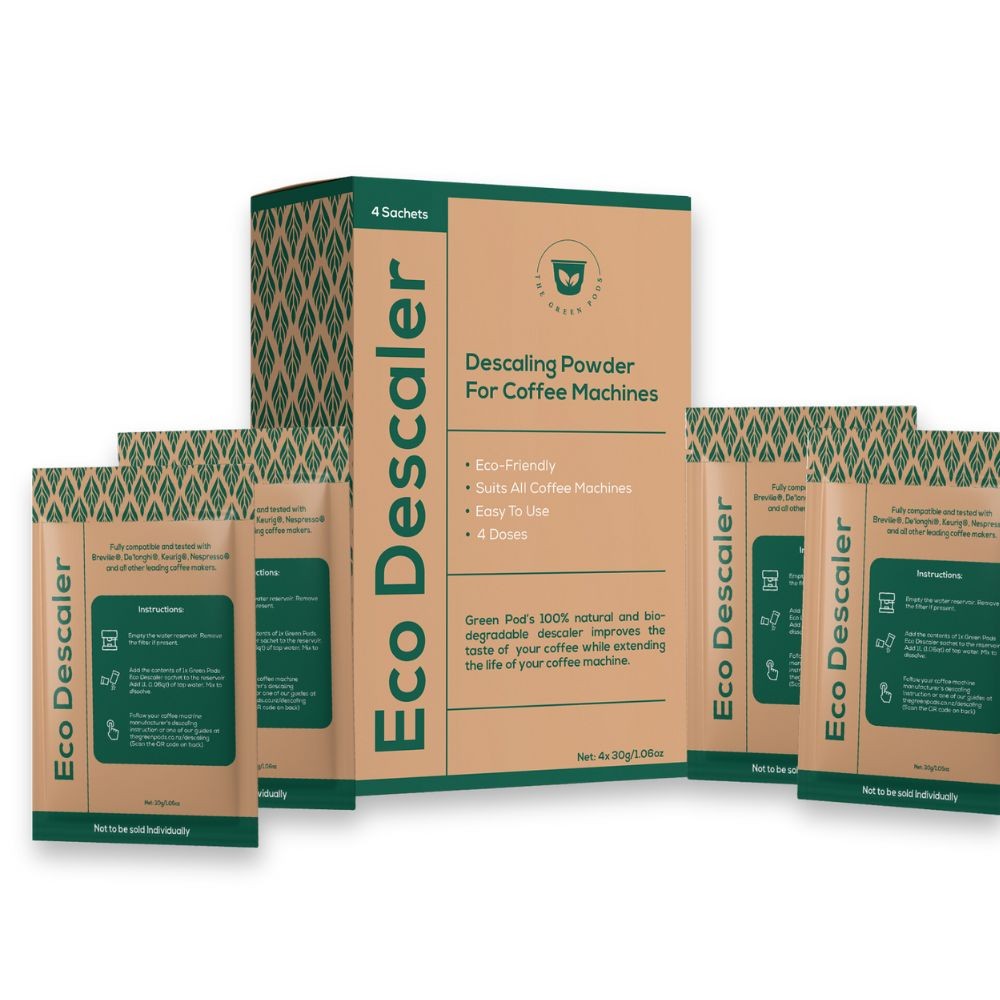
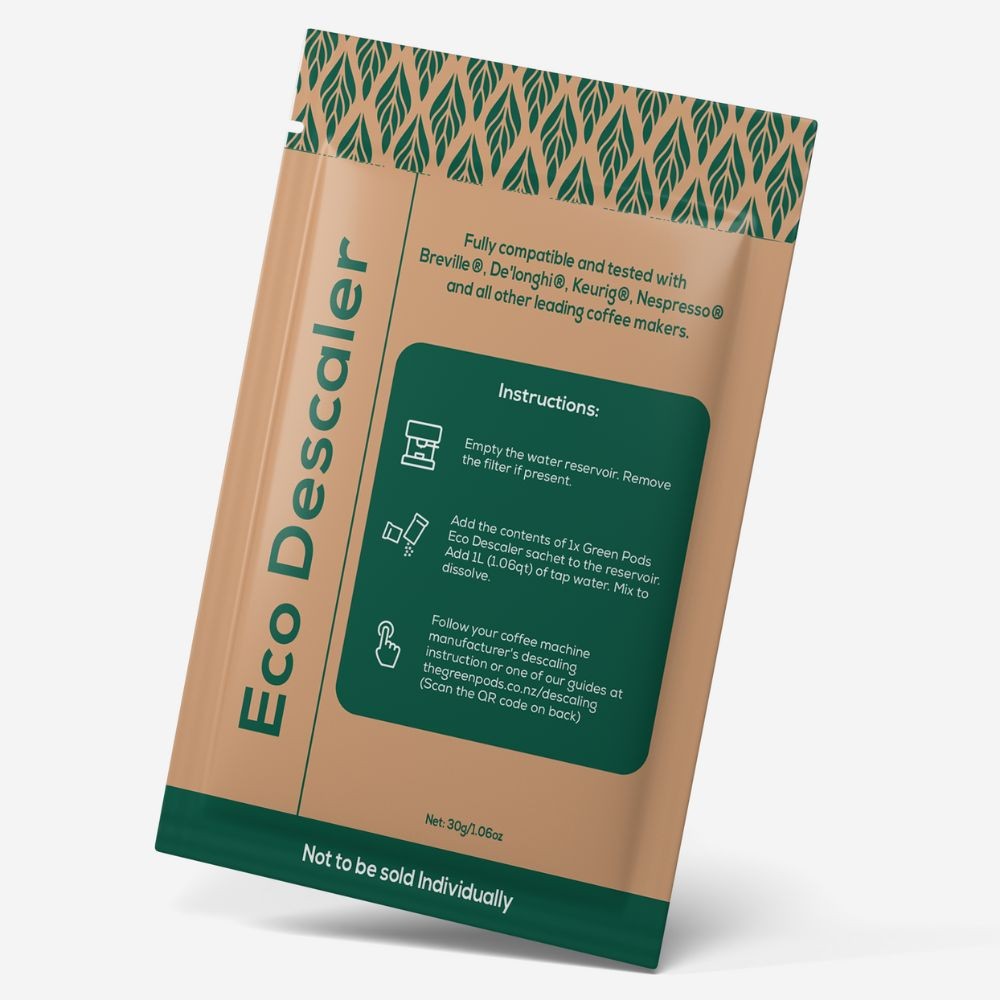
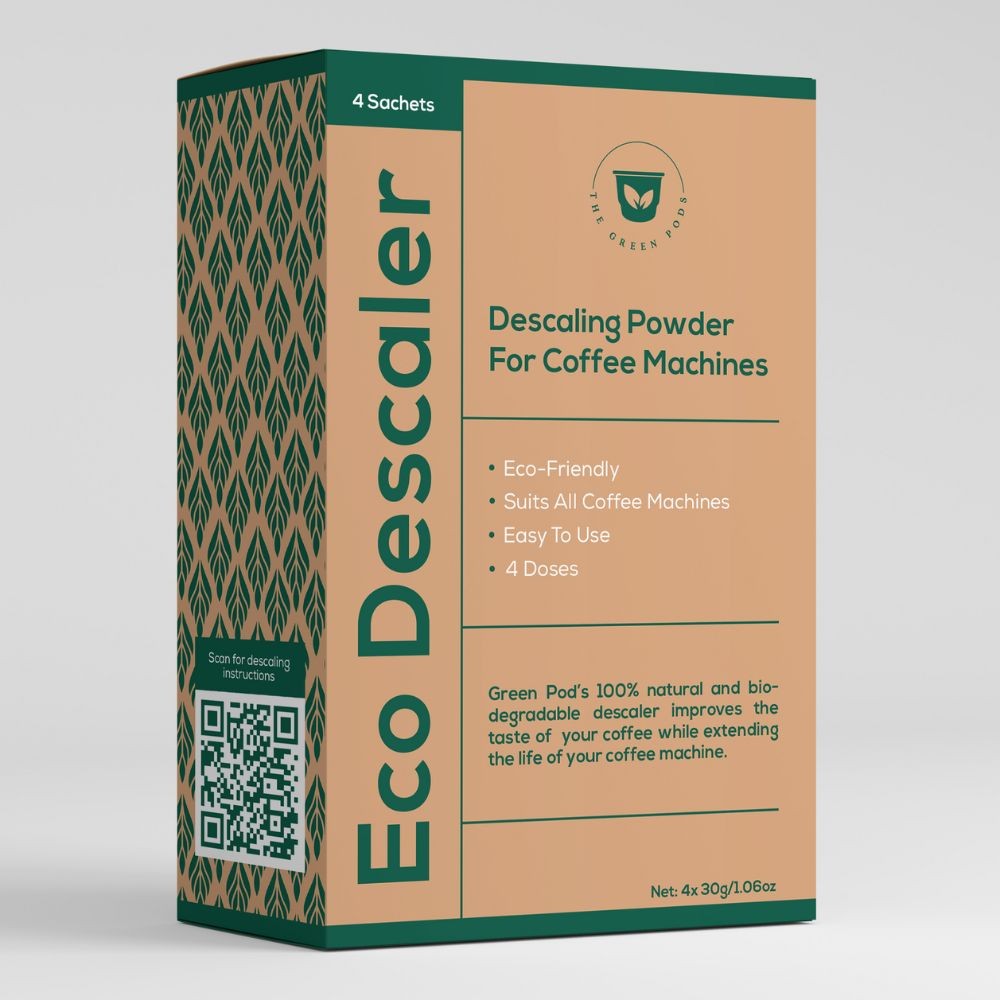
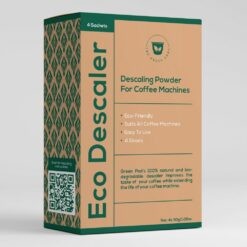






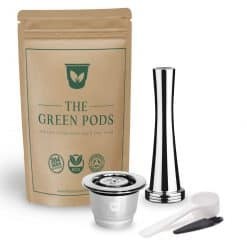



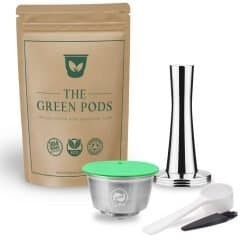


3 reviews for Eco Descaler – Coffee Machine Descaling Powder